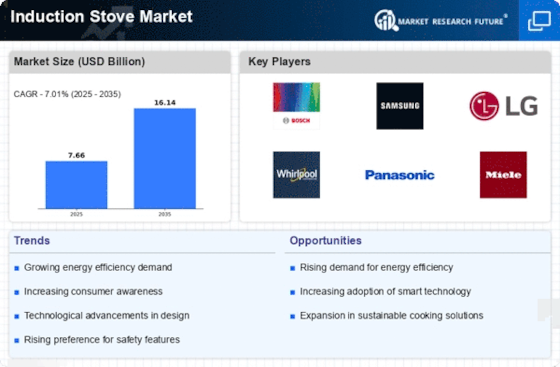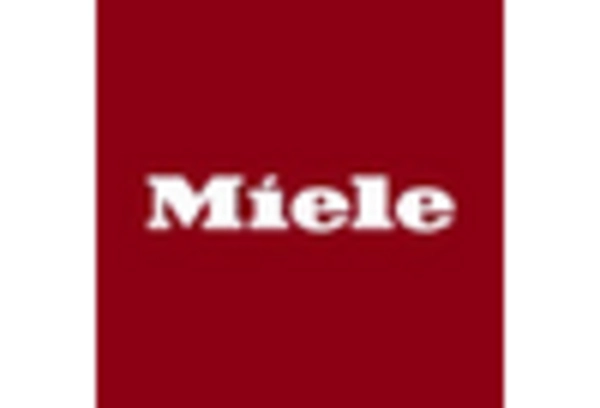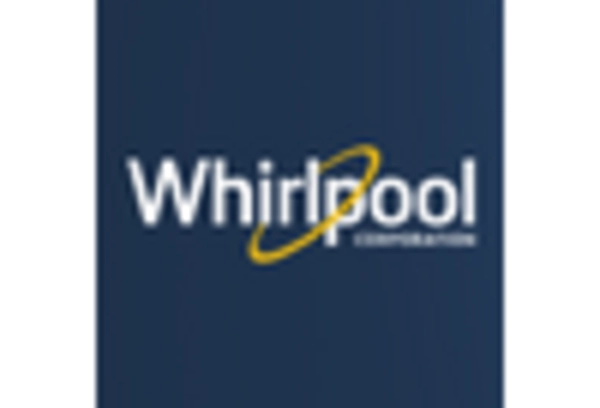Urbanization and Space Constraints
Urbanization continues to drive the Induction Stove Market, particularly in densely populated areas where space is at a premium. Induction stoves are compact and designed to fit into smaller kitchens, making them an ideal choice for urban dwellers. As more individuals move to cities, the demand for efficient and space-saving cooking solutions increases. Market data indicates that urban areas are witnessing a 20% rise in induction stove sales, as consumers seek appliances that maximize functionality without compromising on space. This trend suggests that the induction stove market is well-positioned to cater to the needs of urban consumers, who prioritize convenience and efficiency in their cooking appliances.
Government Initiatives and Incentives
Government initiatives aimed at promoting energy-efficient appliances significantly impact the Induction Stove Market. Various countries are implementing policies and providing incentives to encourage consumers to adopt induction cooking technology. These initiatives often include rebates, tax credits, and educational campaigns highlighting the benefits of induction stoves. Such measures not only stimulate consumer interest but also contribute to a broader transition towards sustainable energy practices. Market projections indicate that these government efforts could lead to a 25% increase in induction stove adoption over the next five years. This supportive regulatory environment enhances the market's growth potential, making induction stoves a more attractive option for consumers.
Environmental Concerns and Sustainability
The growing emphasis on environmental sustainability significantly influences the Induction Stove Market. As consumers become more environmentally conscious, the demand for energy-efficient cooking solutions rises. Induction stoves are recognized for their lower carbon footprint compared to traditional gas stoves, as they utilize electricity more efficiently. This shift towards sustainable cooking practices aligns with global efforts to reduce greenhouse gas emissions. Market analysis suggests that the induction stove segment could capture a larger share of the cooking appliance market, potentially reaching 30% by 2027. This trend reflects a broader societal movement towards eco-friendly products, thereby enhancing the attractiveness of induction stoves among environmentally aware consumers.
Rising Consumer Awareness of Health Benefits
The Induction Stove Market experiences a notable increase in consumer awareness regarding health benefits associated with cooking methods. Induction stoves are perceived as healthier alternatives due to their ability to minimize the risk of burns and reduce the emission of harmful gases. This awareness is likely to drive demand, as consumers prioritize safety and health in their cooking choices. Furthermore, the induction cooking process retains more nutrients in food compared to traditional methods, which appeals to health-conscious individuals. As a result, the market is projected to grow, with estimates suggesting a compound annual growth rate of around 8% over the next few years. This trend indicates a shift towards healthier cooking practices, thereby enhancing the appeal of the induction stove market.
Technological Advancements in Cooking Appliances
Technological advancements play a crucial role in shaping the Induction Stove Market. Innovations such as touch controls, smart connectivity, and enhanced energy efficiency are becoming increasingly prevalent. These advancements not only improve user experience but also contribute to energy savings, which is a significant consideration for modern consumers. The integration of smart technology allows for remote operation and monitoring, making cooking more convenient. Market data indicates that the introduction of these features has led to a surge in sales, with a reported increase of 15% in the last year alone. As technology continues to evolve, the induction stove market is likely to benefit from ongoing innovations that cater to consumer preferences for convenience and efficiency.


















Leave a Comment